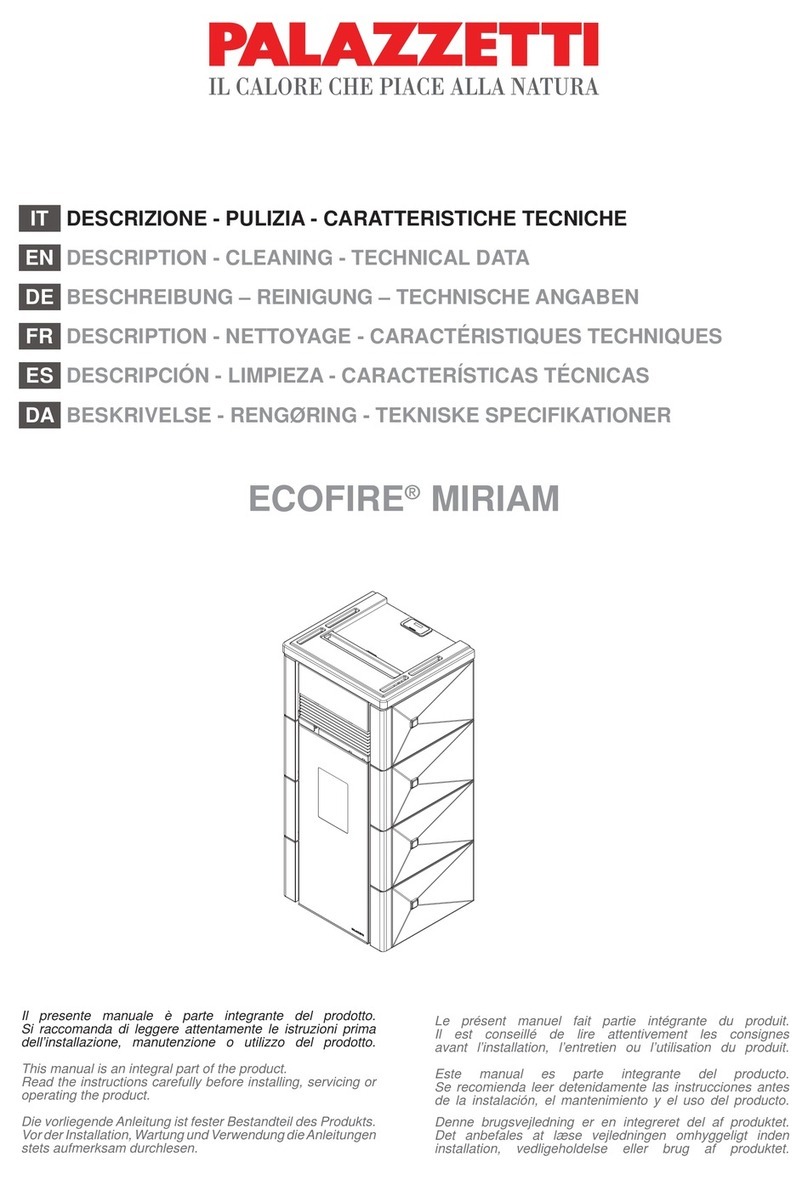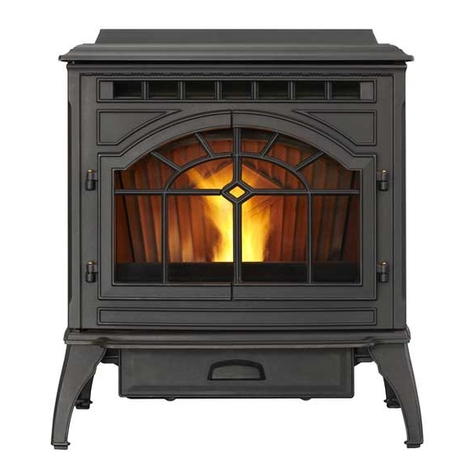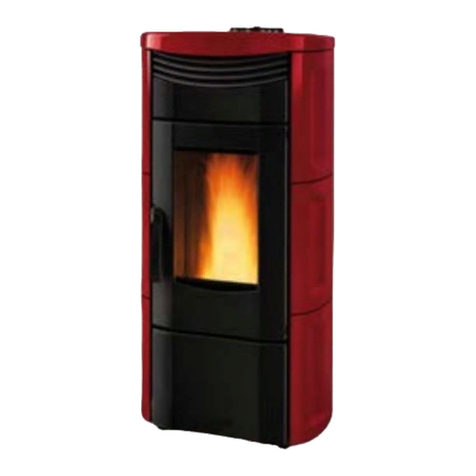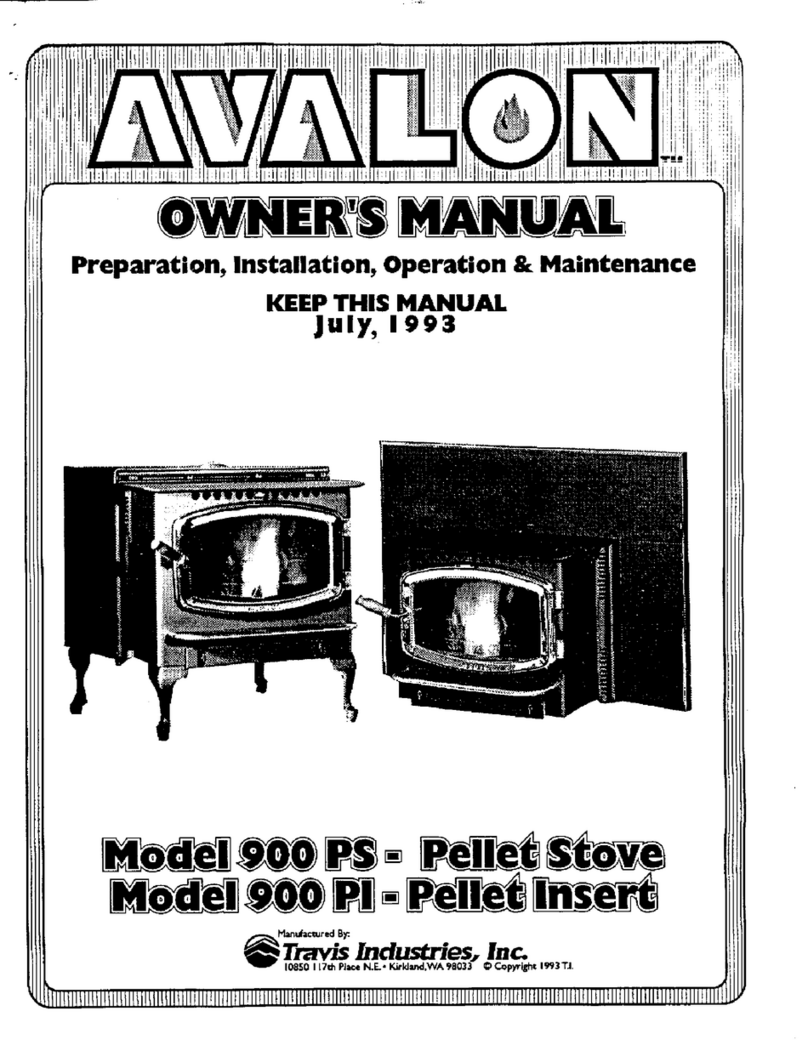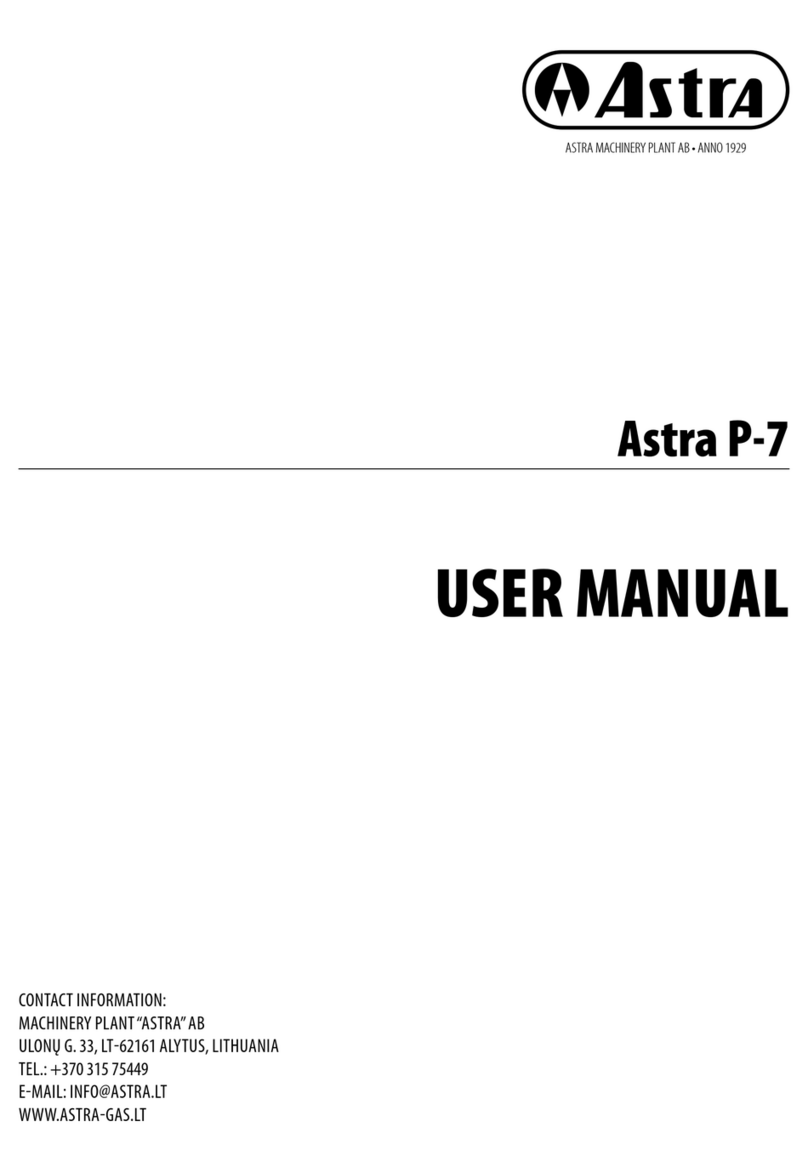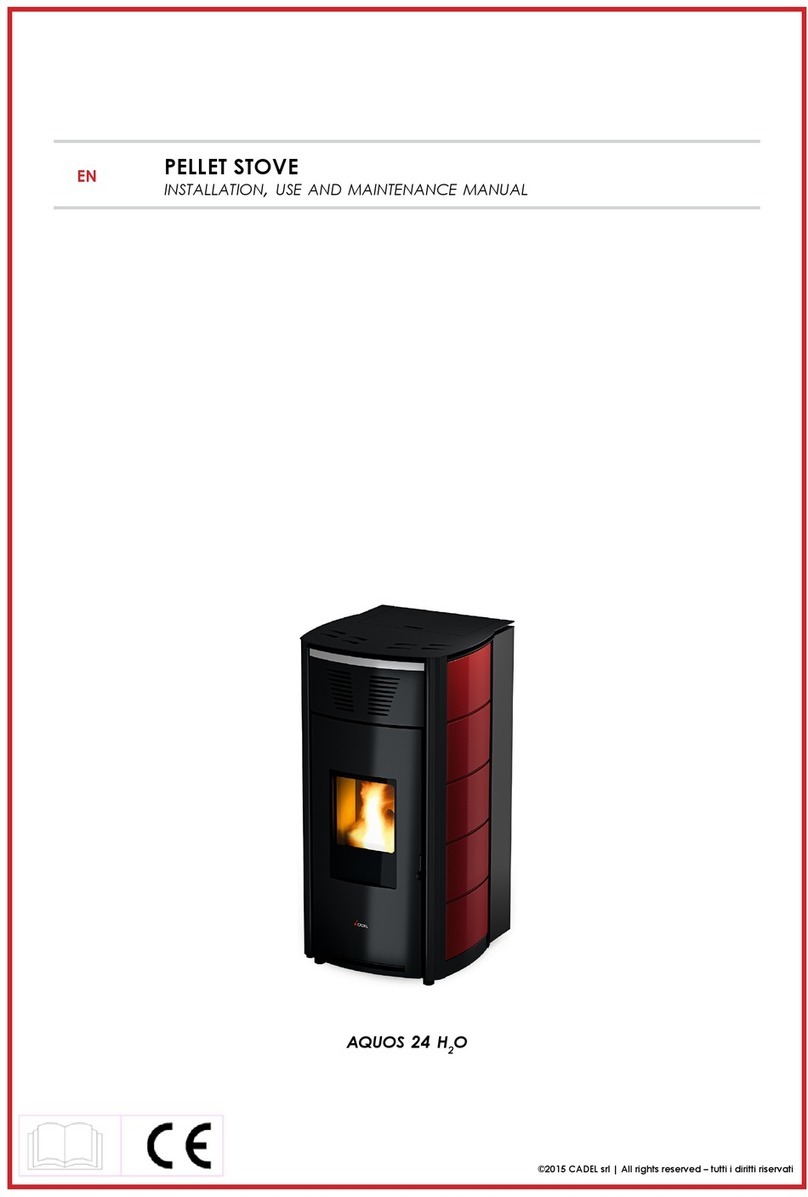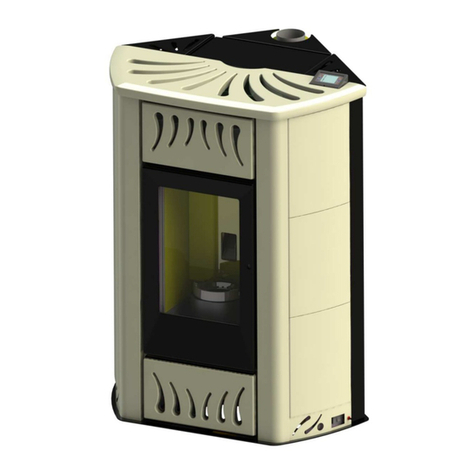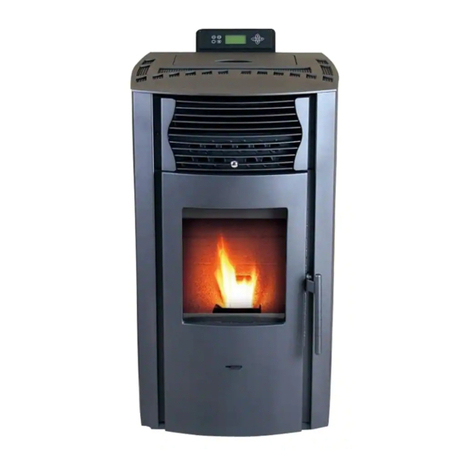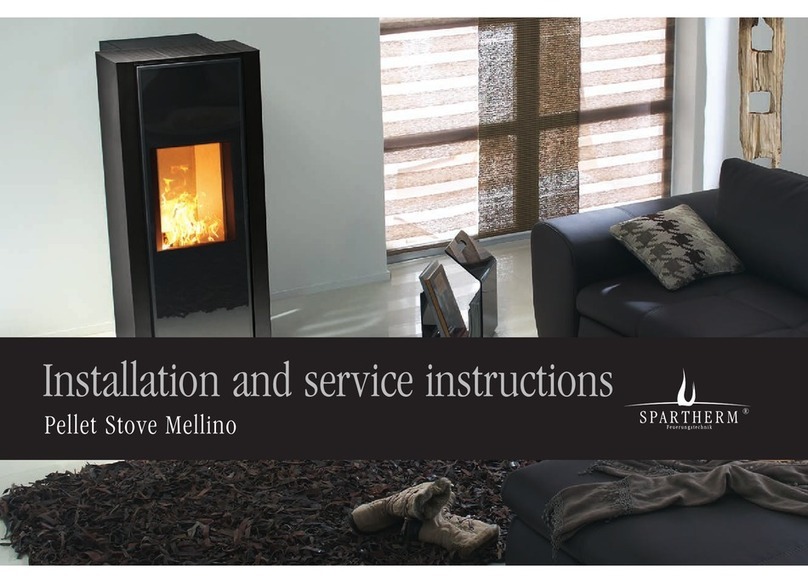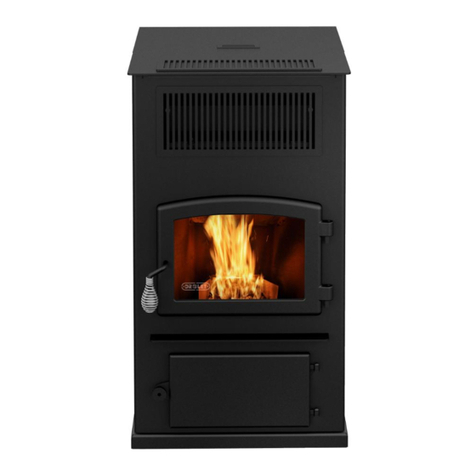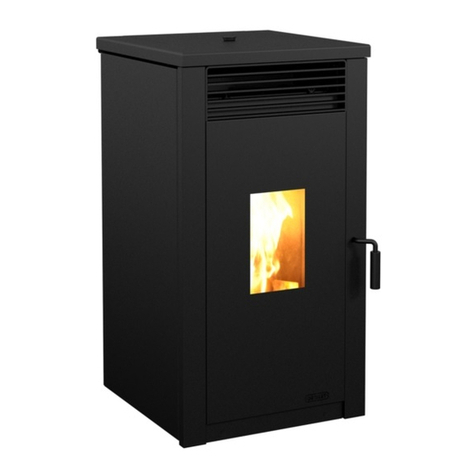
Eco-65 Installation and Operation Manual
3
Table of contents
1
Introduction..............................................................................................................................................5
1.1
About Pellet Heating..............................................................................................................................5
1.1.1
Top 10 Reasons for Buying a Pellet Stove...................................................................................5
1.2
Appliance performance
(1)
......................................................................................................................6
1.3
General Features ..................................................................................................................................7
1.4
Overall Exterior Dimensions..................................................................................................................8
PART A – INSTALLATION................................................................................................................................9
2
Installation Safety Information...............................................................................................................9
2.1
Installation Warnings, Cautions and Recommendations ......................................................................9
2.2
Regulations Covering Pellet Stove Installation ...................................................................................10
2.3
Before Operating Your Stove..............................................................................................................10
3
Clearances to Combustible Material....................................................................................................11
3.1
Certification Label Location.................................................................................................................12
3.2
Minimum Clearances to Combustibles................................................................................................12
3.3
Floor Protection...................................................................................................................................13
4
Venting system ......................................................................................................................................14
4.1
General................................................................................................................................................14
4.2
Recommendations ..............................................................................................................................14
4.3
Equivalent Vent Length (EVL).............................................................................................................14
4.4
Termination Location...........................................................................................................................16
4.4.1
Permitted Termination Location..................................................................................................16
4.5
Installation Configurations...................................................................................................................17
4.5.1
Installation Warnings, Cautions and Recommendations Reminder...........................................17
4.5.2
Through Wall Installation (Main Floor or Basement)..................................................................18
4.5.3
Through Roof Installation ...........................................................................................................19
4.5.4
Through a Factory Built Chimney...............................................................................................20
4.5.5
Through an Existing Masonry Fireplace.....................................................................................21
4.5.6
Through an Existing Masonry Chimney .....................................................................................22
PART B - OPERATION ...................................................................................................................................23
4.6
General Information.............................................................................................................................23
4.7
Operation Warnings, Cautions and Recommendations......................................................................23
4.7.1
Zone Heating and How to Make It Work for You........................................................................25
4.8
Combustible ........................................................................................................................................26
4.8.1
Proper Fuel.................................................................................................................................26
4.8.2
Where to Store Bags of Pellets ..................................................................................................26
5
Stove Controls .......................................................................................................................................27
5.1
Control Panel.......................................................................................................................................27
5.1.1
Mode Button ...............................................................................................................................28
5.1.2
Fuel Feed Button........................................................................................................................29
5.1.3
Convection Fan Speed Control ..................................................................................................29
5.1.4
Heat Level...................................................................................................................................29
5.1.5
Reset ..........................................................................................................................................29
5.2
Adjustments.........................................................................................................................................30
5.2.1
Selecting the Combustion Level (Heat Rate) .............................................................................30
5.2.2
Adjusting the Convection Fan Speed.........................................................................................30
6
Stove Operation.....................................................................................................................................31
6.1
First Startup.........................................................................................................................................31
6.2
Everyday Startup.................................................................................................................................31
6.3
Running Out of Pellets ........................................................................................................................31
6.4
Refueling .............................................................................................................................................31
6.5
Shutting Down Procedure ...................................................................................................................32
6.6
Operating the Stove Using a Thermostat............................................................................................32
6.6.1
Pilot Mode Selection...................................................................................................................32
6.7
Signs of an Overheating Stove ...........................................................................................................33
